03. Vad är Fascia? Så upptäckte forskare nya celler och ett nytt organ
Bakgrunden till forskningen om Fascia, vårt nätverk av bindväv som omsluter allt i kroppen, från muskler och skelett, till organ och celler


Bakgrunden till forskningen om Fascia, vårt nätverk av bindväv som omsluter allt i kroppen, från muskler och skelett, till organ och celler
Den tyska dokumentären ”The mysterious world under the skin” från 2018 ger en djupare introduktion till Fascia och Fasciaforskning.
Fascialinjer är ett bra sätt att förstå hur kroppen fungerar och hur behandling kan optimeras för att öka rörligheten och funktionaliteten. Huvudprincipen är att muskler, oavsett vad de gör individuellt, också påverkar vävnader i hela kroppen.
Vid Fascia Research Congress 2015 ger Tom Myers, författaren till Anatomy Trains, en kort introduktion till Fascia och hur ny forskning förändrar hur vi ser på smärta och besvär.
Det Myers kanske är mest känd för är de kraftöverföringslinjer som han beskriver i sin bok Anatomy Trains. Dessa kan vara en bra grund för ökad förståelse kring fascians funktioner.
Fascia och den levande kroppen är ett dokument om den vetenskapliga förståelsen kroppen som en levande helhet.
Genom att vi börjat se kroppen som något som lever, och inte något som är dött, har vi kunnat börja lägga märke till andra saker.
Kort genomgång av hur de senaste årens forskning visar att Fascia har en mycket större betydelse för hälsa, värk och smärta än man tidigare har trott.
Många känner kanske till att C-vitamin är bra för immunförsvaret, men visste du att produktionen av ny Fascia är beroende av C-vitamin? Eller att vi förbrukar 7 gånger mer C-vitamin vid stress?
Strolling under the skin är en fascinerande resa in under huden. Med små videokameror har Dr. Jean Claude Guimberteau lyckats filma levande fascia.
Från Newton, till Einstein, till dagens snabbväxande fasciaforskning. Hur förstår vi saker ur ett annat perspektiv?
För mycket fria radikaler leder det till oxidativ stress – ett tillstånd som kan få stora negativa konsekvenser för vår hälsa.
2015 blev veterinär Vibeke S Elbrønd först i världen med en publikation om Fascia på hästar. För att kunna göra det blev hon tvungen att sätta sig in i all forskning som fanns om Fascia.
Denna nya insikt har lett till en löpeld av nya upptäckter som börjat utmana våra konventionella uppfattningar om människokroppen – och de senaste insikterna presenterades på Fascia Research Congress i Berlin.